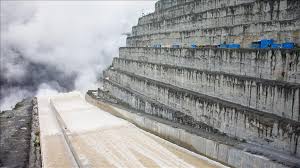China has commenced construction on what is set to become the world’s largest hydropower dam, located on the eastern edge of the Tibetan Plateau. The ambitious project, announced by Premier Li Qiang and reported by the state-run Xinhua news agency, is expected to cost approximately $170 billion and begin operations in the 2030s.
The massive structure will span the lower reaches of the Yarlung Zangbo River, a section that dramatically descends 2,000 meters over a 50-kilometre stretch offering immense hydropower potential. The project will consist of five cascade hydropower stations and is forecast to generate up to 300 billion kilowatt-hours of electricity annually.
Beijing maintains that the dam will meet growing energy demands in Tibet and across China while minimizing environmental and downstream impacts. However, neighboring countries and environmental groups have voiced serious concerns. India and Bangladesh, both of which lie downstream along the Brahmaputra River (as the Yarlung Zangbo is known beyond China), fear adverse consequences for millions of residents who rely on the river for agriculture and daily needs.
NGOs such as the International Campaign for Tibet have warned that the dam could irreversibly damage the fragile ecosystem of the Tibetan Plateau, which is one of the world’s most biodiverse regions. The Chinese government has yet to disclose how many people might be displaced or what specific ecological safeguards will be implemented.
Despite these concerns, the news has driven a surge in related stocks. China’s CSI Construction & Engineering Index soared to a seven-month high, with companies such as Power Construction Corporation of China and Arcplus Group hitting their 10% daily trading limits. Firms in construction, cement, tunnel equipment, and explosives—like Hunan Wuxin Tunnel and Tibet GaoZheng Explosive Co also saw sharp share price increases.
Premier Li described the project as a “project of the century,” emphasizing the need for ecological conservation. Yet, critics remain wary, pointing to the social and environmental costs of past megaprojects like the Three Gorges Dam.
As construction advances, the world will closely watch how China balances energy ambitions with environmental and geopolitical responsibilities.

